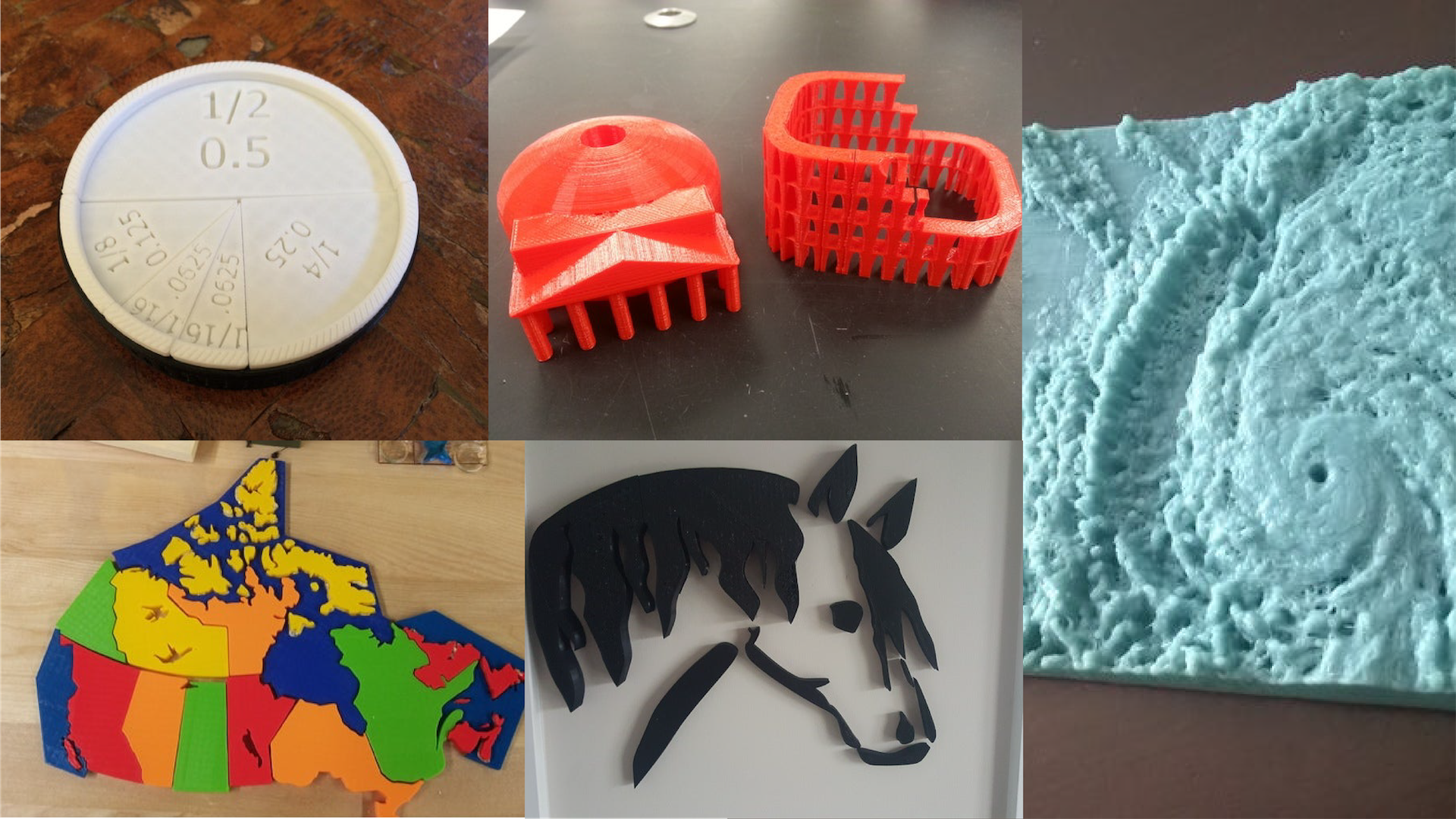
Many schools and Library Commons have quickly adopted 3D printers as a core makerspaces technology. While it's great to design, model, and 3D print things for fun, it’s also important that this tool is used to enhance learning and engagement. One of the paradigms InkSmith believes in is teaching with the technology rather than teaching the technology. Leveraging tools like 3D printing for deeper learning is what educational technology is all about!
In order to utilize 3D printing effectively across all areas of education, it's important to find applicable content for every subject. 3D printers are not only an engineering tool - they can be used to enhance learning in a wide variety of subjects and develop design thinking skills.
Design thinking is important in all subjects for a few reasons:
- Design thinking allows students to view problems from a different perspective.
- Design thinking encourages innovative, creative, and collaborative problem-solving.
- Design thinking results in a more effective and informative learning experience.
Looking for some 3D printing ideas? You’ve come to the right place! InkSmith has created a comprehensive curriculum package that covers a wide variety of subjects. If you’ve purchased a printer through us, you can preview and sign up for that curriculum package here!
Check out our list of 3D printing project ideas by subject below!
Math
Having the ability to physically manipulate fractions and decimal points can make learning the relationship between the two much easier for students in math. A 3D printed pie broken into slices like the one shown below does a great job of this. Students can either source files like this one from Thingiverse or they can design their own using software like Tinkercad.

History
Sometimes it can be hard for students to understand the complexity of different historical wonders without being able to actually see them. One amazing way to introduce students to all sorts of different historical monuments and artifacts is to 3D print them! Students could even research a monument, design it in Tinkercad, and then 3D print their own creation. This method of understanding historical artifacts is sure to garner a deeper understanding and appreciation of the culture.
You can find this 3D model file and other landmarks like it here on Thingiverse.
Pro Tip: 3D modeling monuments and artifacts to scale incorporates a significant amount of math - another great way to integrate 3D printing with other subjects.

Art
Art is a subject that is often seen as less complementary to technology. Think again! A project like the one pictured below incorporates art and design thinking to a great degree. In this project, students must design a silhouette image and 3D print out the various components. With a little bit of creativity, the possibilities for combining art and 3D printing are infinite!
You can print this exact horse art project from the Thingiverse file found here.

Geography
Canadian provinces and territories look even better when they’re colour coordinated! This 3D printing project is a great way to enhance learning and engagement by having students 3D print the provinces for geography. From here, students can practice naming and rearranging the various provinces and territories. Extra points for getting all the northern islands correct! For more advanced geography classes, 3D printing can also be used to demonstrate topographical maps.
This exact map of Canada and the 3D print files needed to create this project can be found here on Thingiverse.

Science
There’s plenty of great ways to use 3D printing in science. Some of our favourite projects include printing out the different planets in our solar system or large-scale versions of different molecules. However, have you ever thought of 3D printing weather patterns like the one below! This model is of Hurricane Katrina.
This Hurricane Katrina 3D model can be found here on the Thingiverse opensource platform.

That’s it! Five great ways to incorporate 3D printing across different subjects. Students can either model variations of these prints themselves or source them from an opensource platform such as Thingiverse. Ready, set print!


Programme d’apprentissage du robot k8 MAINTENANT DISPONIBLE EN FRANÇAIS!
InkSmith Releases Spanish Curriculum for k8 Robot and Climate Action Kit